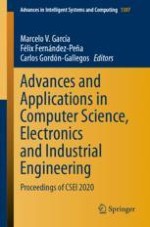This book presents the proceedings of the Conference on Computer Science, Electronics and Industrial Engineering (CSEI 2020), held in Ambato in October 2020, with participants from 15 countries and guest speakers from Chile, Colombia, France, Japan, Spain, Portugal, and USA. It discusses topics such as the use of metaheuristic for non-deterministic problem solutions, software architectures for supporting e-government initiatives, and the use of electronics in e-learning and industrial environments. It also includes contributions illustrating how new approaches on these converging research areas are impacting the development of human societies around the world into Society 5.0. As such, it is a valuable resource for scholars and practitioners alike.
